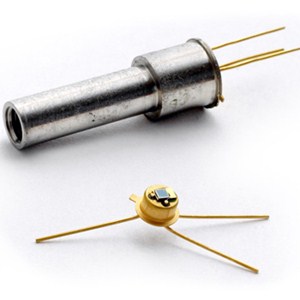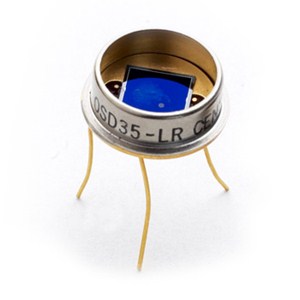- ABOUT US
-
History
-
History
Founded in 1945 by Gilbert Tomes and Alec Tidmarsh, Centronic, or Centurion Tubes as it was then known, started life in the back bedroom of Gilbert Tomes' house in Kent, England.
Read more...
-
-
Capabilities & Facilities
-
Capabilities & Facilities
Centronic’s expertise covers all aspects of production, complete in-house design & manufacturing, machining and environmental testing to final test/inspection, thereby maintaining complete control of all operation sequences.
Read more...
-
-
Our Customers
-
Our Customers
Centronic has decades of experience of supplying the biggest names in our chosen industries.
Read more...
-
- Need to speak to someone?
-
Contact Name
Centronic Limited - Contact Tel. 0044 1689 808000
- Email them here
-
History
- PRODUCTS
- Silicon Photodiodes
- Reactor Control Detectors
- Gas-Filled Instrumentation Detectors
- Geiger Muller Tubes
- Precision Wound Components
- Need to speak to someone?
-
Contact Name
Centronic Limited - Contact Tel. 0044 1689 808000
- Email them here
- MARKETS
- Nuclear
-
Nuclear
Centronic Limited has been supplying to the Nuclear Industry since the 1950s. As the first company worldwide to supply radiation detectors to nuclear reactors for commercial electricity generation, Centronic is still a trusted supplier to some of the...
Read more...
-
- Aerospace
-
Aerospace
As a provider of Silicon photodiodes for cockpit display lighting control and communication systems, Centronic has significant experience of supplying the Aerospace industry, and meeting its exacting quality requirements. We also supply electromagnet...
Read more...
-
- Defence
-
Defence
Centronic Limited has supplied silicon photodiode products to some of the biggest defence companies in the world. Our products have been used in Laser Ranger and Marked Target Seeker projects, weapon simulator systems, and cockpit and display lightin...
Read more...
-
- Research
-
Research
Centronic has close relationships with many research facilities worldwide, and provides detectors for measurement and environmental control for research establishments studying materials utilising particle physics, synchrotron, fusion and fission tec...
Read more...
-
- Industrial
-
Industrial
Centronic supplies detectors worldwide for Instrumentation covering diverse applications including spectrometry, non-destructive testing, particle analysis and characterisation, metrology, high temperature measurements, colour and pattern recognition...
Read more...
-
- Space
-
Space
Centronic has worked on projects for many key customers in the space industry, providing silicon photodiodes for sun acquisition sensors for launch vehicles for various space exploration projects. We have also supplied detectors for imaging systems f...
Read more...
-
- Oil and Gas
-
Oil and Gas
Centronic is a key supplier of Geiger Muller tubes for intrinsically safe personnel and area dosimeters, nuclear density gauges for oil separation, well logging and fluid level measurement instrumentation.
Read more...
-
- Medical
-
Medical
Centronic detectors are used widely in medical applications, for applications such as x-ray monitoring (CT systems), blood glucose and haemoglobin monitoring, radiological imaging, H&S and environmental and waste management.
Read more...
-
- Need to speak to someone?
-
Contact Name
Centronic Limited - Contact Tel. 0044 1689 808000
- Email them here
- Nuclear
- NEWS & EVENTS
- News
-
Centronic is donating to the National Trust plant a tree scheme
We are donating to the National Trust plant a tree scheme for every new joiner to Centronic. The aim of the scheme is to plant and establish 20 million trees by 2030, and we are proud to support it. It's also a nice thought that as a new joiner grows...
Read more...
-
- Events
-
International Nuclear Manufacturing Summit 2022
Centronic will be attending and exhibiting in the International Nuclear Manufacturing Summit 2022 at the Magna Science Adventure Centre in Rotherham on November the 16th and 17th.
Read more...
-
- Need to speak to someone?
-
Contact Name
Centronic Limited - Contact Tel. 0044 1689 808000
- Email them here
- News
- CAREERS
- Employment opportunities
-
Centronic careers
Thank you for your interest in a career at Centronic. Please visit the Centronic Careers page on Indeed to view and apply for our current roles: https://uk.indeed.com/cmp/Centronic/jobs. Thank you!
Read more...
-
- Why Join Us
-
Why Join Us
Based in Croydon, London UK, Centronic is a well-established engineering and manufacturing business. Serving a range of exciting and demanding industries, and working closely with some of the largest companies in the world, we are always keen to hear...
Read more...
-
- Need to speak to someone?
-
Contact Name
Centronic Limited - Contact Tel. 0044 1689 808000
- Email them here
- Employment opportunities
- CONTACT US
- How to find us
-
How to find us
Centronic Limited – Head Office,Centronic House,King Henry's Drive,Croydon,Surrey CR9 0BG
Read more...
-
- Agents & Distributors
-
Agents and Distributors
No matter where ever you are located in the world Centronic Ltd are always happy to help, however If you prefer to contact someone closer to home, we have many distributors throughout the world.
Read more...
-
- Enquiries
- Need to speak to someone?
-
Contact Name
Centronic Limited - Contact Tel. 0044 1689 808000
- Email them here
- How to find us



